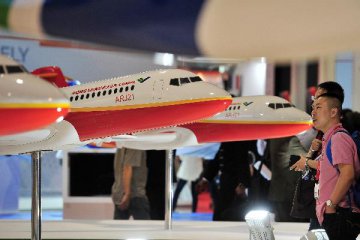Boeing has forecast demand for 6,810 new aircraft in China in the next 20 years, estimating a total value of about one trillion U.S. dollars, according to a report released on Tuesday in Beijing.
According to Boeing's annual current market outlook, China is expected to become the world's first trillion-dollar aviation market within 20 years.
"As China's economic transition into a more consumer-based economy, the aviation industry will play a key role," said Randy Tinseth, vice president of marketing with Boeing Commercial Airplanes.
China's continuous economic growth will bring vitality to the aviation market, Tinseth said. Besides, new airliners and a rising middle-class will drive market growth.
"As travel and transportation are key services, we expect to see passenger traffic grow 6.4 percent annually in China over the next 20 years," he said.
China has become Boeing's largest customer in the world. In the past three years, Boeing delivered to Chinese customers with 25 percent of its total aircraft production. To meet demand from the surging middle class in China and th;roughout Asia, low-cost carriers and the traditional full-service airlines have been adding planes and expanding new point-to-point services to cater for both leisure and business travel.
Boeing estimated that China will need 5,110 new single-aisle airplanes through 2035. And China' s widebody fleet will triple in size, requiring 1,560 new airplanes.
According to Boeing statistics, China' s single-aisle fleet currently accounts for about 18 percent of global single-aisle aircraft. The widebody fleet only represents about 5 percent of the global widebody segment.
"The continuing expansion of China's middle class, new visa policies and a wide range of widebody airplanes give us reasons to expect a very bright future for China's long-haul market," said Tinseth.
Empowering by its growing e-commerce business, the air cargo is expected to become a key driver for the continuous growth of aviation in China. Boeing forecast the country will also need about 180 new freighters and 410 converted freighters.





















Latest comments